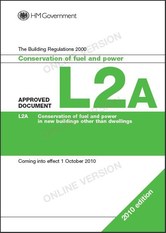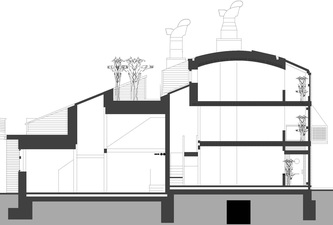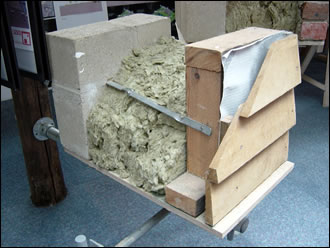What is U-Value?

The U-value, describes how well a building element conducts heat.
It measures the rate of heat transfer through a building element over a given area, under standardized conditions.
U is the inverse of R with SI units of W/(m²K)
It measures the rate of heat transfer through a building element over a given area, under standardized conditions.
U is the inverse of R with SI units of W/(m²K)
What is R-Value?

The R-value is a measure of thermal resistance.
Under uniform conditions it is the ratio of the temperature difference across an insulator and the heat flux
(heat flow per unit area, QA) through it or R = ΔT/ QA.
The R-value being discussed is the unit thermal resistance. This is used for a unit value of any particular material.
It is expressed as the thickness of the material divided by the thermal conductivity.
Under uniform conditions it is the ratio of the temperature difference across an insulator and the heat flux
(heat flow per unit area, QA) through it or R = ΔT/ QA.
The R-value being discussed is the unit thermal resistance. This is used for a unit value of any particular material.
It is expressed as the thickness of the material divided by the thermal conductivity.
What do the numbers mean?
As R-value gives you how much thermal resistance the material has,the bigger the number, the better the building insulation's effectiveness.
As U-value is the reciprocal of R-value the best value is the smallest value. Meaning that the best insulation will get the lowest U-value for the building. 0 being no heat escaping.
The images below show the BedZED housing project. The roof and north facing walls are very thick this was done to cram enough insulation in the cavity to give the smallest possible U-value.
As U-value is the reciprocal of R-value the best value is the smallest value. Meaning that the best insulation will get the lowest U-value for the building. 0 being no heat escaping.
The images below show the BedZED housing project. The roof and north facing walls are very thick this was done to cram enough insulation in the cavity to give the smallest possible U-value.
Why are U-values Relevant?

According to the Building Regulations Part L2A Different parts of the building require different U-Values.
The most recent document that comes into effect on the 1st October 2010
The following details are the highest parameters for the U-value of course the insulations qualities may be better than these.
Roof 0.25 W/m2.K
Wall 0.35 W/m2.K
Floor 0.25 W/m2.K
For more information on U-values please check the links below
The most recent document that comes into effect on the 1st October 2010
The following details are the highest parameters for the U-value of course the insulations qualities may be better than these.
Roof 0.25 W/m2.K
Wall 0.35 W/m2.K
Floor 0.25 W/m2.K
For more information on U-values please check the links below



